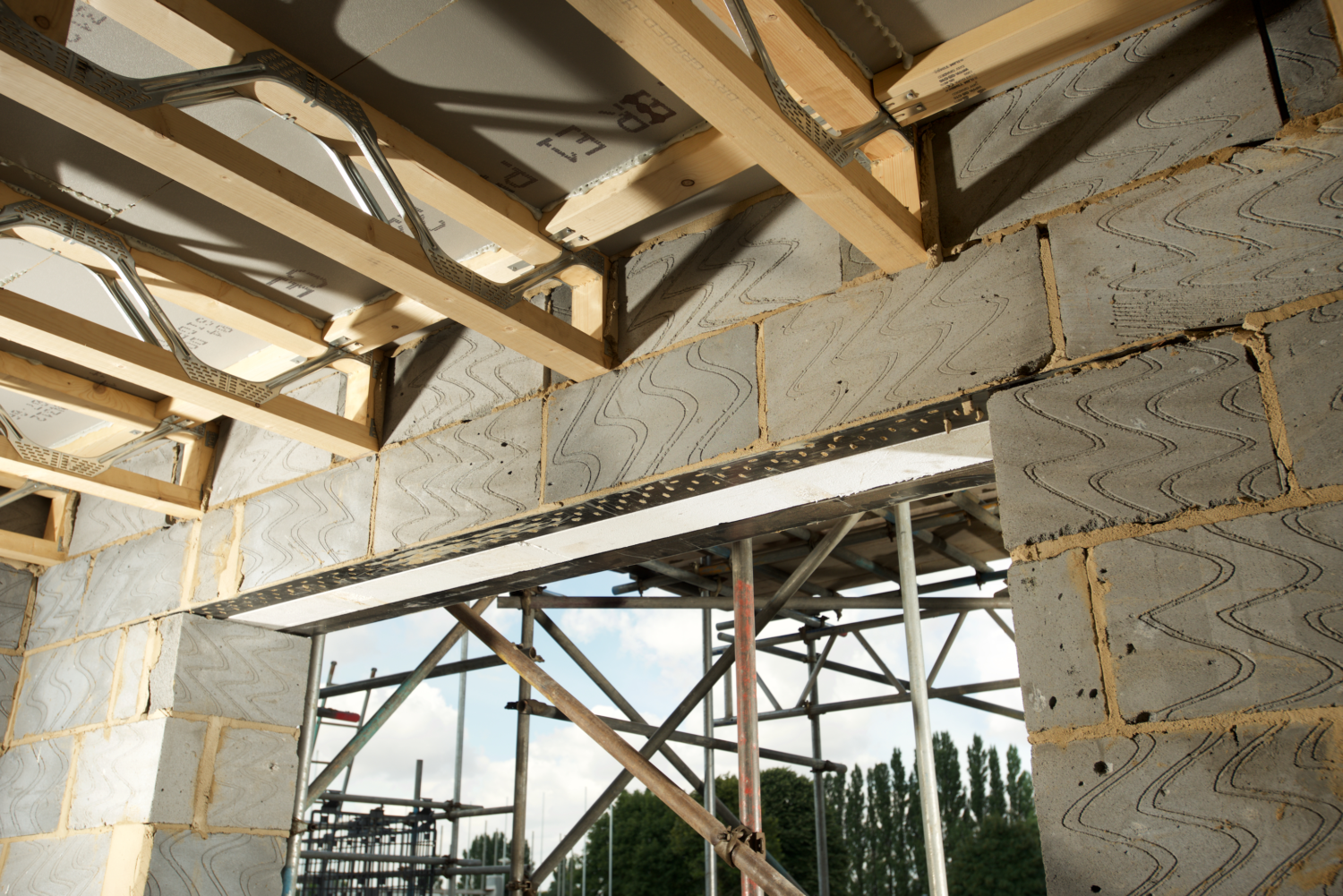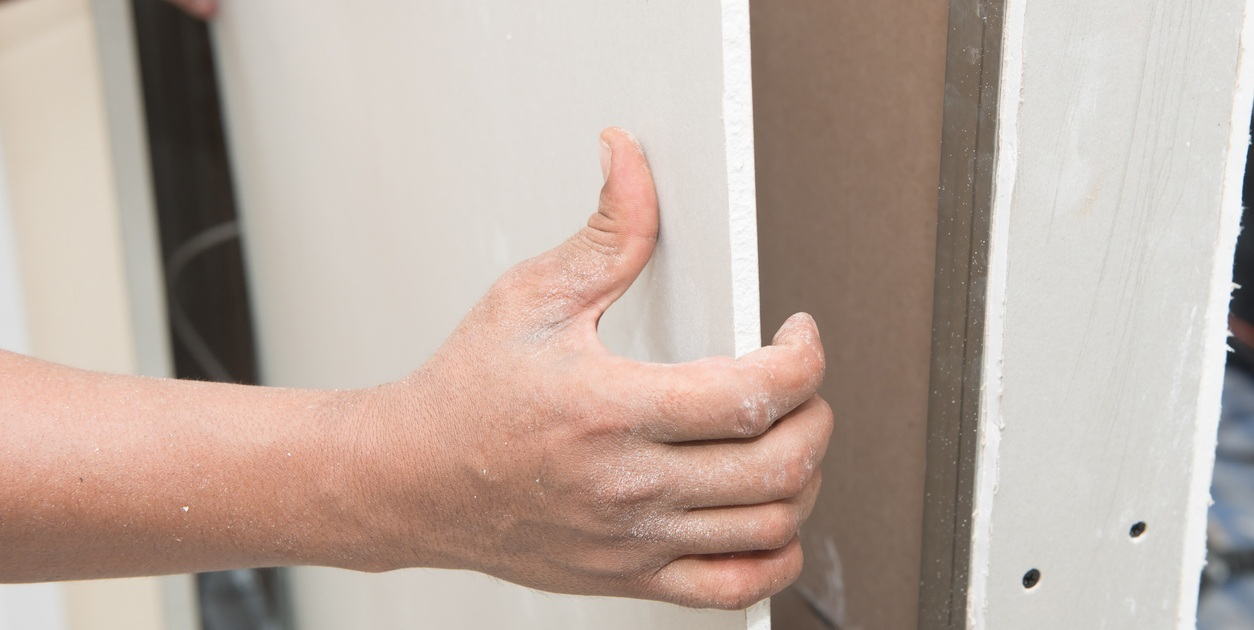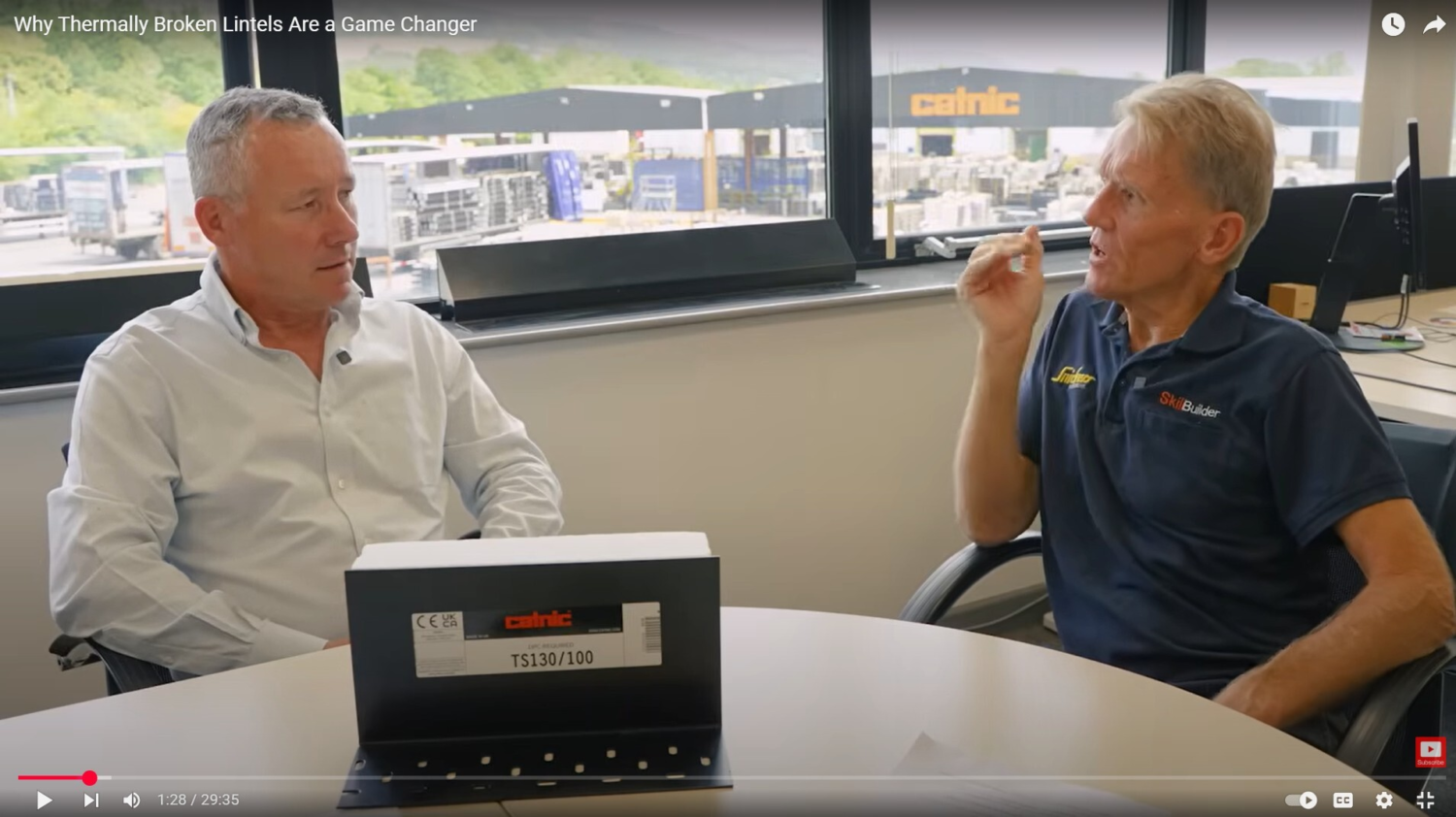One-piece thermally broken lintels offer five significant benefits over other lintel solutions for cavity walls. From reducing thermal bridging heat loss to meeting regulatory demands, there’s many reasons to choose a thermally broken lintel over other solutions.
Masonry cavity construction is the most popular building method for external walls in the UK, particularly for residential developments. Lintel solutions have a significant role to play beyond their main structural function, and this post explores the main benefits of using thermally broken lintels in place of other types.
What is a thermally broken lintel?
Right now, you may be wondering: what does thermally broken mean? In terms of lintel design, this refers to the addition of an insulating layer within the two separated leaves. This effectively minimises the level of heat transfer between the inner and outer parts of the lintel.
Just like more traditional lintels, the thermally broken versions are also designed to support the loads above windows, doors, and other building openings. However, the unique inclusion of the thermal break makes for significant improvement in the building’s thermal performance.
Thermally broken lintels ensure energy efficiency over and above the standards set out in the updated building regulations.
What are the benefits of thermally broken lintels?
Here, we list the top five benefits of using a thermally broken lintel in your installation.
1. Reduced thermal bridging heat loss
Paying attention to linear thermal bridging and achieving low psi values at junction details should be commonplace on any project. Door and window head details are one such junction, and the type of lintel incorporated in their detailing helps to define the psi value that goes into energy assessment calculations.
Not all one-piece cavity wall lintels offer the same performance. Even where integral insulation is a feature, if the steel body is continuous across the entire width of the lintel (or connected via a steel bracket) then it conducts heat energy across the full width of the wall, bypassing the insulation layer in the wall cavity.
A thermally broken lintel is designed so that the steel body of the lintel is interrupted with a clear break, eliminating the conduction of heat energy through the metal component. The thermal bridging effect of the lintel specifically, and the window head detail more generally, is significantly reduced as a result.
2. Contributing to energy and carbon reduction targets

Low psi values make a positive difference to building performance. The default psi value for an open back cavity lintel with base plate is 0.50 W/mK. A thermally broken lintel achieves considerably lower psi values.
For example, the Catnic Thermally Broken Lintel (TBL) guarantees a psi value of 0.05 W/mK or less. That means the heat lost through a door or window head detail using a TBL will be at least one-tenth of traditional one-piece cavity lintels, and potentially more.
On projects where national building regulations are the target, the enhanced performance of a thermally broken lintel can allow other areas of the building fabric to be optimised.
Where a higher level of energy efficiency is the aim, high performance lintels are essential. Demanding space heating and comfort targets can only be met by using a solution like the TBL, which offers a psi value as low as 0.02 W/mK.
3. Creating healthier indoor environments
Lower surface temperatures at poorly detailed or constructed linear thermal bridges can cause condensation to form, especially in humid environments. If a linear thermal bridge remains damp, then black mould may form, increasing the risk of respiratory health problems.
Good thermal bridge detailing and low psi values play a significant role in creating healthier and more comfortable homes. When psi values are calculated, a temperature factor (fRSI) is also calculated to show the surface temperature. The factor helps in assessing the thermal bridge in terms of condensation risk.
An fRSI of 0.75 is generally considered to be a high standard of comfort for residential properties. All calculated junction details for the Catnic TBL achieve a minimum fRSI of 0.95.
4. Having fewer components than a separate lintel
An alternative to one-piece cavity lintels is separate lintels. Because a separate lintel uses two different components to support the inner and outer masonry leaf, it is technically thermally broken too. Separate lintels used to be widely employed, but one-piece thermally broken lintels have become more popular for the reasons outlined in this post.
With a separate lintel, two different components must be specified compared to sourcing one-piece thermally broken lintels from a single manufacturer.
The separate lintel components then must be installed. At face value, the material costs of a separate lintel might be lower than a one-piece lintel, but any savings are offset by the extra installation time for the separate pieces, and extra time allocated for propping during constriction while mortar sets.
Cavities also must be closed around doors and windows. A one-piece lintel closes the cavity effectively while also providing structural support. A separate lintel does not close the cavity over an opening, so a third component - a cavity closer - must be specified, purchased, and installed.
5. Meeting all other relevant regulatory requirements

The thermal bridging benefits of thermally broken lintels are significant, but they must still meet other relevant regulatory requirements. The Catnic TBL offers equivalent structural performance to other one-piece cavity lintels. Supplemented with a separate DPC, it also offers the necessary moisture resistance to prevent wind-driven rain reaching the inside of the building in any exposure zone.
The new Thermally Broken Lintel represents Catnic’s latest development for the lintel market. The TBL range offers low psi values of between 0.02 and 0.05 W/mK, verified by the BRE, ensuring that door and window head details make the best possible contribution to building fabric heat loss calculations.
More about thermally broken lintels, from Catnic
The benefits of thermally broken lintels outlined in this blog post are discussed in more detail in our white paper. Download the whitepaper here, or contact us for more information about lintel specification and project support.
More
-
![]()
- Plaster Bead & Mesh
- Guide
How to Fix an Angle Bead to Plasterboard
-
![]()
- Lintels
- Guide
Why thermally broken lintels are a game changer


